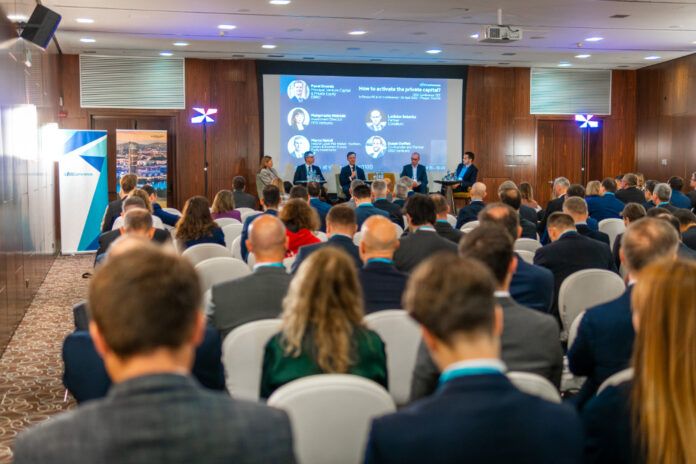Bildnachweis: 0100 Conferences.
Despite the current geopolitical risks, the Central and Eastern European (CEE) Region’s investing landscape positions as dynamic and of high interest for LPs and GPs across Europe. Offering a unique combination of benefits including lower operational costs, a skilled workforce, and supportive regulatory frameworks, the CEE region presents significant opportunities for investors in both private equity and venture capital, according to some of the industry major players who will be taking the stage at the 13th edition of 0100 Conference CEE from May 14th to May 16th in Prague.
“The CEE Region is attractive for investments, as it offers investors in emerging markets returns while suggesting a developed market downside protection. It presents a number of benefits such as lower operational costs, a skilled workforce, a strong entrepreneurial spirit, and supportive regulatory frameworks. Furthermore, its GDP growth is consistently outpacing the EU average reflecting its dynamic economic landscape and resilience and one can capitalize on sustainably growing markets”, explains Deimantė Korsakaitė, Managing Partner at INVL Baltic Sea Growth Fund, the leading Baltic alternative asset manager.
To capture all these benefits as an LP, Korsakaitė highlights the importance of investing with local smaller mid-market GPs having a strong local team. “Local GPs can manage the nuances of the market as they have their roots in the market, relationship, and know-how, facing less
competition, being able to implement complicated transactions with local founders, and
entrepreneurs, and leverage that to generate superior returns”.
Alexander Galitsky, Co-founder and Managing Partner at Almaz Capital, underscores the
importance of lower labor costs and a favorable tax environment for VC and PE companies. “The long-standing loyalty of startup teams is difficult to find in Silicon Valley. Any concern is going away when I see a strong and loyal team behind the founder’s initial idea”, concludes Galitsky.
“On top of all the attributes mentioned before, the ongoing investment potential of the CEE
Region is yet to be fully discovered. Our aim with the 0100 Conference CEE is to unveil it and
show it to the rest of Europe and worldwide. In these eight years of bringing together LPs and GPs to the Region, we have seen the rise of maturing businesses with international ambitions and impact-driven entrepreneurs that want to take the Region to the next level, and we at Zero One Hundred Conferences are very proud to be part of this endeavor”, says Pavol Fuchs, CEO of Zero One Hundred Conferences.
About Private Equity Allocation in the CEE Region
“Our discussions with investors across the CEE region reveal a positive outlook for 2024 and a desire for broader exposure to private equity. Alongside the search for resilient strategies, we also observe an increasing demand for regional diversification. Europe and the US stand out as preferred regions for investors, as they value them as the world’s most mature private equity markets. The US in particular is also seen as somewhat insulated from the direct impact of geopolitical tensions and inflationary pressures”, explains David Schäfer, Managing Director at Munich Private Equity Partners.
Nonetheless, from a more general point of view, liquidity remains at the forefront of investors‘
minds. “The prevailing macroeconomic challenges have reshaped private equity’s exit landscape, causing fund managers to delay corporate divestments and limiting the availability
of capital for new fund commitments. This holds especially true for the larger end of the market, where IPOs are a common exit channel. Yet – as vintages launched during or directly after a recession have historically proven to be remarkably strong – interest in private equity remains high”, concludes Schäfer.





